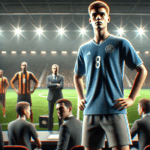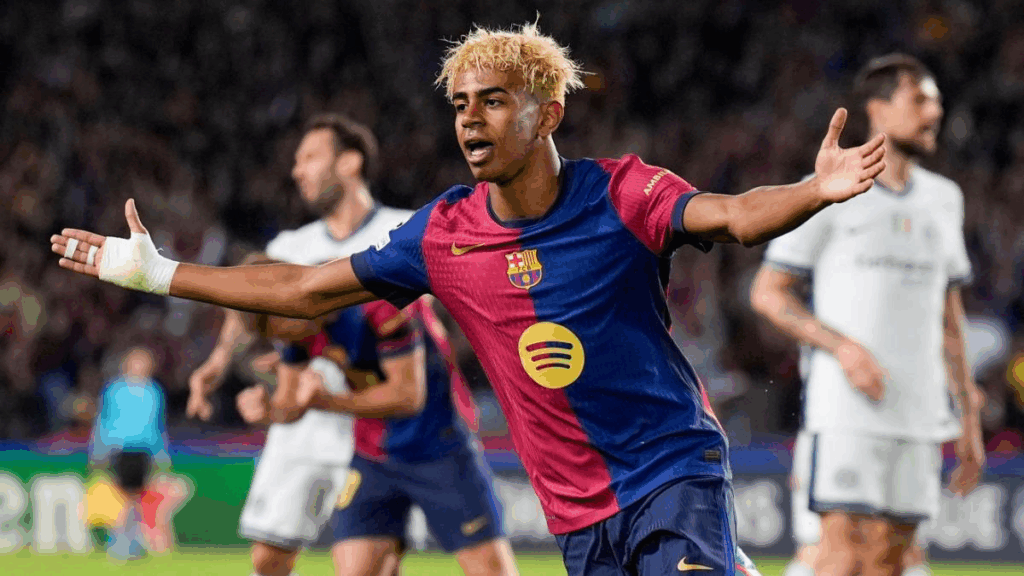Visualization in Football is more than just daydreaming about scoring the winning goal—it’s a proven mental training tool that shapes how players perform under pressure. From penalty shootouts in World Cups to split-second decisions on the pitch, athletes who master visualization sharpen their focus, boost confidence, and create a mental roadmap for success. Whether you’re a young player striving to break into the first team or a professional fine-tuning your edge, understanding how visualization works can redefine what success looks like in modern football.
From Dream to Reality Using the Power of Visualization in Football
Visualization in Football: Real Stories
Rooney quoted in an interview during his time at Manchester United.
“I lie in bed the night before the game and visualise myself scoring goals or doing well,”
“You’re trying to put yourself in that moment and trying to prepare yourself, to have a ‘memory’ before the game. I don’t know if you’d call it visualising or dreaming, but I’ve always done it, my whole life.”
1. Opening Anecdote: Paul McVeigh—and the Goal He Envisioned as a Kid
When Paul McVeigh was 17, inspired by his golf‑loving dad, he began imagining scoring goals in exact detail: where he’d pick up the ball, how he’d dribble, the screech of the turf, the roar of the crowd—and then, match after match, the goals happened just as he had visualized. This simple yet powerful mental routine helped him shift from dreaming to delivering at elite levels.
2. Why Visualization in Football Works: The Brain Trick That Feels Real
Scientific studies confirm that vividly imagining an action—like a perfectly timed pass or a calm penalty—activates the same brain regions involved in physically doing it. One article estimated performance gains of around 11% when visualization is added to physical training.
Even Neymar, Phelps, Drogba, and Pele built routines around mental video reels—Pele famously spent 30 minutes in pre-game solitude visualizing his best goals under the locker-room towels.
3. Everyday Heroes: Footballers Who Found Their Mental Edge
#### Anthony Gordon (Newcastle/England)
At just twenty-three, Gordon credits daily visualization—immersing himself in match scenarios two days before kickoff—with elevating his play to 11 goals and nine assists in one season. He even plans to study psychology post-football.
Danilo (Flamengo/Brazil)
After tough spells at Real Madrid, Danilo worked with sports psychologists and embraced mental health openly. He described his time under Pep Guardiola at Manchester City as “brainwashing… in a good way.” He now dedicates time off social media to promote mental wellness through his foundation.
Fran Kirby (England Women’s National Team)
Kirby dropped out of football as a teenager after losing her mother, sinking into depression and unable to get out of bed. She eventually rediscovered the game, leaned into mental resilience, and has become an inspirational advocate for athlete mental health.
Mickey Bennett (Ex‑League Player)
After a career‑ending knee injury, Bennett faced crippling anxiety and eventually founded a counselling organization for footballers struggling with depression. He now leads player welfare efforts at the PFA.
4. Visualization in Football: Teams That Won by Strengthening Minds
England (2018 World Cup)
Under Gareth Southgate, England integrated shared storytelling sessions and psychological resilience work. Breaking decades-long curses, they won their first World Cup shootout and reached the semi-finals.
Leicester City (2015–16 Premiere League)
Underdogs across the board, Leicester won the title with belief built by early mindset coaching dating back years. Claudio Ranieri encouraged a relaxed, playful team culture that sustained their confidence.
Liverpool (“Mentality Monsters”)
After near misses in key finals, Liverpool brought in mental-conditioning routines and stress-management education. The result: a team famously resilient under pressure, delivering trophies consistently.
5. Scientifically Proven Benefits Behind the Stories
| Technique | Real-World Example | What Research Shows |
|---|---|---|
| Visualization / Mental Imagery | McVeigh, Gordon, Drogba, Pele | Increases neural pathway activation and performance by ~11% |
| Self‑Efficacy & Resilience | Kirby, Bennett, England squad | Strong correlation (r ≈ 0.38–0.74) with performance |
| Team Cohesion & Shared Psych Work | Leicester, England | Psychological support triggered cultural shifts and unexpected wins |
Academic tools like mental imagery, arousal regulation, structured routines, and goal-setting have repeatedly yielded measurable improvements in decision‑making speed, accuracy, composure, and clutch performance.
“Don’t think this stuff counts as a substitute for training. Yes, it does strengthen the pathway in your brain, but it should be used as well as training, not instead of it. Each technical skill has its own chain in your brain. The more you do a skill, the bigger the chain gets. Bigger chains help your brain send your body more messages, and quicker. The latest neuroscientific research found that visualising a skill also increases this chain.”
6. How to Get Started—Anyone, Anywhere
- Morning & Night Visualization
Lock in a five-minute mental “film” of yourself performing: dribbling, passing, scoring. Add sound (crowd cheers), touch (ball at feet), color (teammates’ kits). Make it immersive.
Use all your senses
“If you want that goal poacher’s sixth sense for a tap-in you’re going to have to engage your body’s sensory system. Visualise a vivid picture so real you can almost touch it. Not just what would you see, but what you would hear and feel. Close your eyes, relax and imagine how you’re going to evade the booze fumes oozing off the 18-stone centre-back marking you after a 10-hour bender.”
- Self‑Talk & Focus on Control
Replace “don’t miss” with “focus on striking cleanly.” Focus on what you control rather than fear failure. - Routines That Signal Readiness
Pre-match rituals—deep breathing, playlists, mental cues—tell your body and mind “game on.” - Share & Reflect
Teams benefit from open sessions about pressure and failure. It builds emotional trust and reduces stigma around mental health.
“The great thing about this is you can practise it anywhere. Stuck in traffic for five minutes? Visualise yourself commanding the game. On a bus to training? Visualise what a great session would look like. Strapped into the dentist’s chair? Visualise squeezing up a high line. Build up a picture of what you want to do out there on the pitch, like a personal DVD of your greatest moments that you can watch over and over.”
7. Visualization in Football: Join the Mental Revolution
Footballers like Paul McVeigh, Anthony Gordon, Danilo, and Fran Kirby share one key truth: the mind can be an athlete’s greatest asset—or their blind spot. Science supports this—mental imagery increases performance, resilience doubles under pressure, and mindset shifts change what teams and individuals believe they can do.
By weaving powerful personal stories with measurable psychological tools, this is more than theory. It’s a call to action: not only for elite players, but for clubs, coaches, parents, and youth players—the sooner you begin mental training, the sooner it becomes part of who you are, not just what you do.









